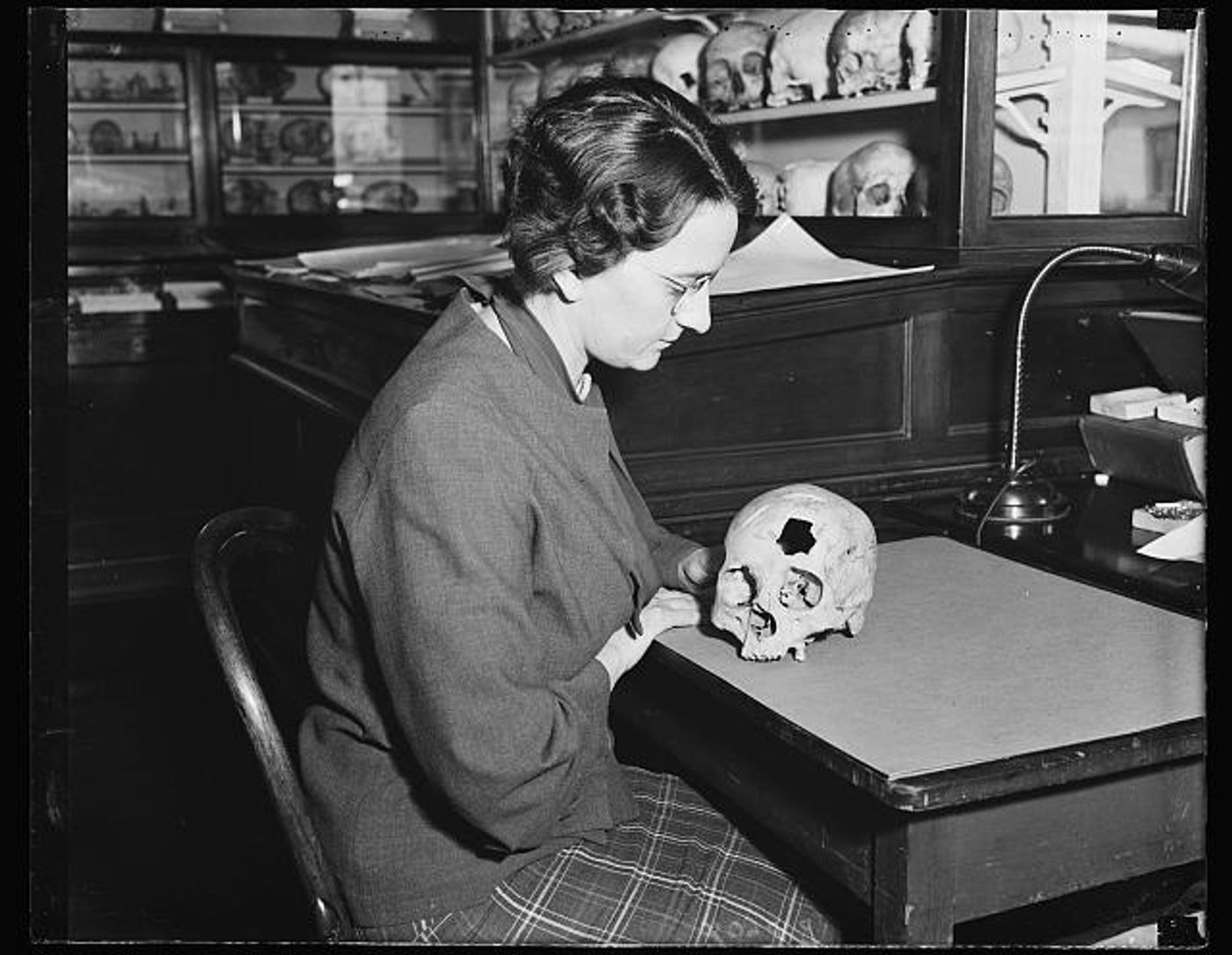Oldest Brain Surgery in North America
A hole in the forehead of an old skull from northwest Alabama may not seem significant, but this is no ordinary hole. This hole was deliberately made on a living individual, either by scraping or drilling, not to harm but to help.
The puncturing of the skull by drilling or scraping is known as Trepanation or Trephination. It was a surgical procedure used to help relieve pressure or treat various perceived ailments of the head. The procedure may have also held ritual significance depending on the culture.
Figure 1: An assistant at the Smithsonian Institute examines a trepanned skull. The method of trepanation here is not specified. Photo credit: Library of Congress, Prints & Photographs Division, photograph by Harris & Ewing, [reproduction number, e.g., LC-USZ62-123456].
Trepanation dates as far back as the Neolithic period, the name given to different periods of time across the world whenever agriculture was adopted in those places. Cases of this procedure have been found worldwide, either from skulls and the instruments used to make the holes or from documents describing the process itself and the successes and failures of the results. In North Africa, examples of trepanation have been identified as long as 13,000 years ago.
What makes this case significant is that in the Americas, the procedure was initially believed only to go back 1000 years. But this recent discovery tells us this was in practice as far back as 3000 to 5000 years ago.
There are four main types of trepanation: cutting, drilling, (circular or linear) grooving, and scraping. Historically, and prehistorically speaking, the scraping method was the most successful in terms of survival. Indeed, in this case from what’s now Alabama, the technique used was scraping. Where a sharp tool would be used to progressively scrape away a piece of bone rather than cutting or drilling. Here, the individual is thought to have lived for up to a year after the surgery was performed.
Figure 2: A scraping device from Peru showing a trepanation in progress on the handle. A tool like this would have been used in scraping method trepanations. Credit: La médecine dans l'ancien Pérou / Raoul d'Harcourt. Creative Commons Attribution 4.0 International license via the Wellcome Collection.
It is no longer a procedure that is in use today. Instead, it was replaced with craniotomy, a similar but more advanced and safer way of locating and removing a piece of skull to relieve pressure from around the head or to access the brain to remove a tumor, for instance. Unlike many forms of trepanation, in craniotomy the removed part of the skull is replaced, avoiding leaving a permanent hole in the head.
You can learn more about trephanation in historical North America from the multiple cases identified at the Jamestown colony.
Sources: Science Direct (1, 2), Science News, World Neurosurgery










